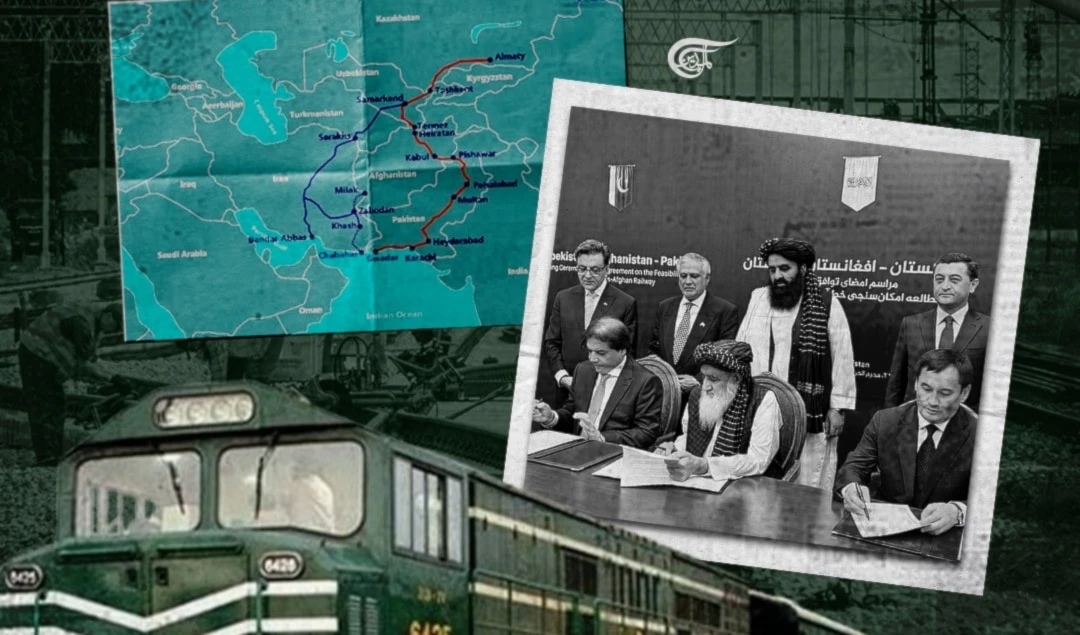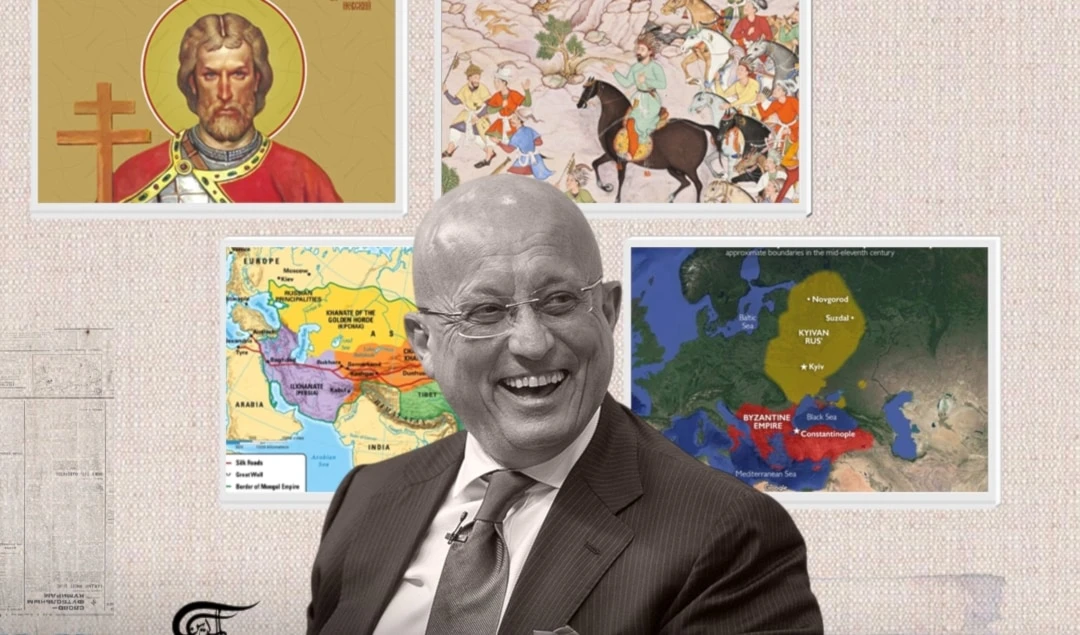Khorasan: The Eternal Battlefield... and the Bleeding Heart of Asia - Chapter 5
Amanollah Khan's ushered Afghanistan into a new era, but the situation was prone to extreme changes.
-

Khorasan: The Eternal Battlefield... and the Bleeding Heart of Asia - Chapter 5
Pashtun Rule
Amanollah Khan, Habibollah Kalakâni
After Amir Abdoll Rahman Khan's death in 1901, his son Habibollah Khan inherited his rule. Like his father, he remained a loyal servant of the British.
When Habibollah Khan was assassinated in 1919, his third son Amanollah Khan seized his father's throne. The circumstances behind this assassination were never clarified, but almost all historians suspect Amanollah of being behind the conspiracy.
After his inauguration as Amir of Afghanistan, Amanollah declared Afghanistan independent, triggering the third war against Britain. The outcome was the Treaty of Rawalpindi of 8 August 1919, in which the United Kingdom recognised the full independence of Afghanistan, while Afghanistan recognised the Durand Line between Afghanistan and British India. With this treaty, Amanollah was forced to accept the loss of some Afghan territory to Great Britain. Moreover, the name "Afghanistan" for the state and the country and the designation "Afghan" for all inhabitants of the country were finally validated internationally.
-

Amanollah Khan
Amanollah's domestic and foreign policies were rife with contradictions.
On the one hand, Amanollah undertook important reforms to modernise Afghanistan along European lines (similar to his contemporaries Atatürk in Turkey and Reza Khan in Iran). He was intent on making up for the country's backwardness in the shortest possible time. He banned slavery and the wearing of the veil for women and launched significant projects to urbanise Afghanistan. Important steps were taken in the field of education. New, modern schools were founded; numerous pupils, both boys and girls, were sent abroad to study and further their education. It was also at this time that Afghanistan received its first constitution. These developments and projects were received with enthusiasm and goodwill by the young, educated and aspiring stratum of the mostly urban population, but met with rejection from the rural population (especially the conservative Pashtuns and particularly the feudal lords), which then manifested itself in the form of uprisings. Moreover, dubious figures from the British Indian Territory were appointed to important offices and functions of the polity. Influential khans and feudal lords, who saw their interests threatened by the new reforms, predictably began to resist... not to mention the clerical class, which was traditionally opposed to any reform or progress. Some Pashtun tribes, who had been exempt from taxes and military service in the past, pursued confrontation with the state when it sought to abolish their tax exemption.
At times, Amanollah's reforms took on absurd features, which ended up making a mockery of his important and serious reforms. For example, he banned the wearing of turbans for men, who were advised to wear top hats instead! Greeting people on the street was to be done by raising one's hat instead of one's hand or through verbal greetings. Many people reacted in disgust to such measures; others made fun of them. Amanollah was especially mocked after completing a journey of several months through Europe (in 1928), where he was repeatedly courted with pomp and circumstance by western elites and the sensation-hungry bourgeois media who saw him as an exotic, oriental, "thousand-and-one-night picture book prince". The Germans in particular wooed him with fervour because of his openly displayed anti-British stance. (This, among other things, is why the British wanted him out of the way.)
-

Amanollah Khan and his wife Queen Soraya Tarzi in London
While Amanollah was in Europe with his family, British agents in Afghanistan circulated fake photographs of his wife Soraya Tarzi, the Queen, in indecent dress and positions. This aided the mullahs and the khans in mobilising the population behind them or at least against the government.
Regarding the question of Pashtun hegemony, on the other hand, Amanollah not only followed the policies of his predecessors, but amplified them – by resettling Pashtuns in non-Pashtun areas at the expense of the local population, filling the important posts in the administration and military with Pashtuns or loyal non-Pashtuns. And he did not stop there; he extended this hegemony to the cultural sphere... which his predecessors had overlooked. His ideologue and executor in this field was his father-in-law Mahmud Tarzi, who had previously lived in Istanbul, Baghdad and Damascus. Tarzi, who is considered one of the most important intellectuals of his time, travelled to many European countries, spoke several languages, wrote political and edifying texts, translated European literature into Persian and is said to have been close friends with Sayyed Jamaluddin Al-Afghani, the prominent, yet dubious scholar and pan-Islamist of the 19th and 20th centuries, during his time in Istanbul. (Sayyed Jamaluddin Al-Afghani is considered the "grandfather" of Ikhwan Al-Muslemin / the Muslim Brotherhood).
Tarzi resumed the publishing of a newspaper in Kabul (which had previously been published in India for Afghanistan and was later censored by the British) and ran it as editor-in-chief for several years. At the same time, Amanollah appointed him as his foreign minister.
Tarzi was not only an enthusiastic supporter of Afghanistan's modernisation, but also an "ultra-nationalist without a nation" who was strongly influenced by the prevailing nationalist and fascist ideologies in Europe. At that time, right-wing extremist ideas and movements were widespread in Europe. Many Afghans who were studying or residing in Europe adopted these viewpoints and adapted them to their own society back home. Especially the notions of "Aryanism" and the "superiority of the 'Aryans'" proclaimed by the Germans, fell on fertile ground, because Afghan elites saw themselves as "the authentic Aryans".
Tarzi, who did not speak a word of Pashto (the language of the Pashtuns) and wrote all his texts in Persian, held the ludicrous view that Pashto was the mother of all languages and should be the sole language spoken and written in Afghanistan.
From that moment on, all governments after Amanollah's reign sought the "Pashtunisation" of Afghanistan and of its non-Pashtun population.
Amanollah's hasty, unrealistic and imitated reforms (executed in a "copy-and-paste" manner) ultimately failed and led to calamitous circumstances...
The population was divided; some sided with Amanollah, some against him, depending on their interests. Thus, the Hazaras, who benefited most from Amanollah's reforms, sent thousands of fighters to the government's side, while several Pashtun tribes on the border went to fight against them. Within the government, however, there were apparently elements that appeared to be on the government's side but were in fact sabotaging its policies against the insurgents.
Afghan society soon found itself in the throes of a full-scale class struggle.
In the meantime Habibollah Kalakâni, a somewhat simple-minded former soldier of humble origins from Kalakân (a village in the Tajik province of Kohdâman north of Kabul) gathered a group of like-minded men around him and conducted frequent raids in the area. Pursued by government forces, he soon had to flee to British India where he ran a "samovar" (a tea room) for a while. There, he met with agents of British India disguised as clerics (mullahs). They declared Amanollah an infidel and instructed Habibollah to depose the king. Outfitted with weapons and money, Kalakâni returned to Kohdâman, freed some of his former companions from prison and organised a corps.
Meanwhile, several Pashtun tribes had revolted against Amanollah's government. As large contingents of government troops were sent to fight the uprising of the Shinwari tribe in the southeast there were only a few troops left in Kabul when Habibollah Kalakâni invaded the capital from a side completely unexpected by the government. The few remaining soldiers and a group of students, who had armed themselves to defend their schools, were unable to put up any significant resistance against Habibollah's men, many of whom were unruly bandits. Habibollah Kalakâni was thus able to take Kabul on 17 January 1929 with only 300 fighters.
Amanollah, still in legitimate possession of the throne, retreated to Kandahar where he attempted to organise a resistance force.
After seizing Kabul, Habibollah Kalakâni proclaimed himself king of Afghanistan while Amanollah Khan still remained the legitimate sovereign in absentia.
-

Habibollah Kalakâni
Kalakâni quickly set about reversing all of Amanollah's reforms... Not only did he close all the modern schools for women and girls, but also those for boys who were then obliged to attend religious schools. The judicial reforms that Amanollah instated were eliminated, and Sharia was reintroduced as the sole legal system. Additional measures were taken: the veil for women became compulsory; taxes were abolished; the only two cinemas (in Kabul and Jalalabad) were closed...
Some Tajiks today see Habibollah Kalakâni as a hero who fought for the Tajik cause against Pashtun hegemony... It may be that some educated Persian-speakers actually supported this uprising. And certainly the former government's Pashtunisation measures were influential in encouraging Tajiks to rebel against them. However, the uprising led by Habibollah Kalakâni and his men and their usurpation of power, despite being rooted in the poorer Tajik population, was ultimately a reactionary, anti-modern campaign that ultimately served as an instrument to dismantle state structures and as a "bridge" to an upcoming full-scale regime change operation.
As a matter of fact, the state of affairs under Kalakâni was actually not so unlike the current situation under the rule of the Taleban in Afghanistan today... One could even view Habibollah Kalakâni's nine-month rule as a "precursor" of today's Taleban administration – a kind of "Taleban Regime Lite".
By the end of summer in 1929, the situation became critical: the former partially progressive government had been overthrown; the society was deeply divided; Amanollah Khan, who still saw himself as the "incumbent, legitimate" king of Afghanistan grew increasingly dismayed and impotent... and the country descended ever deeper into civil war.
At that moment, a man who had previously fought for independence on Amanollah's side entered the scene from the wings: General Mohammad Nader Khan Mohammadzayi.

 Tariq Marzbaan
Tariq Marzbaan
 9 Min Read
9 Min Read











